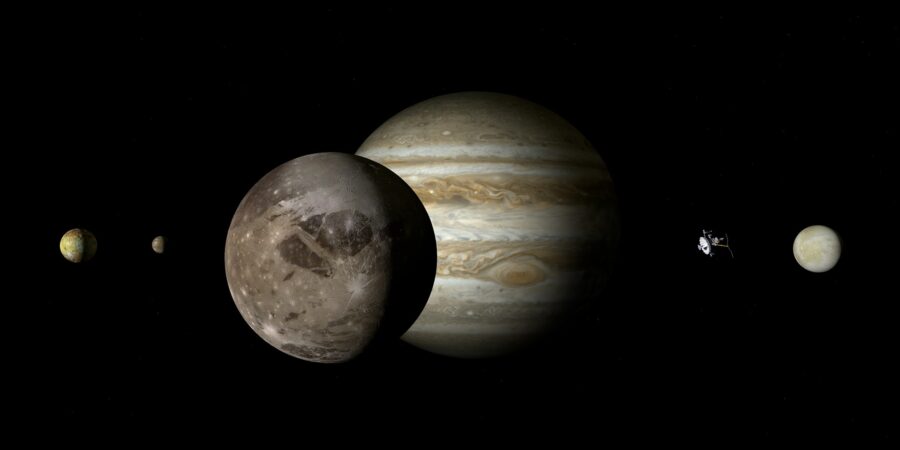NASA’s Latest Recording Sounds Like They’ve Found R2-D2
NASA's new recordings sound like R2-D2 is orbiting Jupiter!
This article is more than 2 years old

When NASA’s unmanned Juno mission arrived at Jupiter in July 2016, per CBS News, there were probably a lot of things scientists working for the agency were expecting and/or hoping to find. But it’s likely none of them soberly considered the possibility they’d find the Star Wars droid R2-D2 near one of the gas giant’s moons. And while no, they didn’t find the astromech droid there, they found something that sounds a lot like him.
According to Comic Book, Juno Mission’s principal investigator Scott Bolton premiered the surprising audio at the American Geophysical Union meeting in New Orleans. NASA’s Juno recorded electric and magnetic radio waves from Ganymede, one of Jupiter’s 53 named moons (26 are still unnamed and/or unconfirmed). The frequencies of the waves have been shifted to make them audible to our ears. You hear them in a series of chirps, beeps, and boops that sound a lot like Star Wars‘ R2-D2. You can listen to the recording below.
If you listen all the way through, you will notice the pitch of the R2-D2-like sounds begins climbing. According to what Bolton said in a NASA statement, the change in pitch represents Juno entering a different part of Ganymede’s magnetosphere. Co-lead investigator William Kurth added that it could be that Juno passed from the “dayside to the nightside” of the moon.
NASA launched the Juno mission in August 2011. It took the spacecraft a little less than five years to enter orbit around Jupiter. Since then, the spacecraft has completed dozens of orbits around the gas giant, and June 7, 2021 its orbit around Jupiter brought it within 645 miles of the surface of its largest moon, Ganymede.
If you visit NASA’s page about Ganymede, it becomes clear why they would be interested in making sure they could learn more about the moon. It is not only the largest moon of Jupiter, but the largest moon in the Solar System. It’s more massive than either Mercury or the dwarf planet Pluto. It is also the only moon known to have its own magnetic field, which was discovered by the Galileo spacecraft in 1996.
Even more intriguing is what is believed to be a massive saltwater ocean waiting under 95 miles of ice on Ganymede’s surface. In 2015 NASA’s Hubble Telescope observed aurorae — which NASA calls “ribbons of glowing, hot electrified gas” — circling Ganymede’s north and south poles. By the way these aurorae rock back and forth in response to the moon’s magnetic field strongly suggests the existence of the underground ocean. NASA estimates the massive ocean will prove to have more water than all of the oceans on the surface of Earth, and that it will be 10 times deeper than our seas.

NASA first began suspecting there was an ocean below the surface of Ganymede in the 1970s. Many scientists believe the interaction between water and rock are “key for the development of life,” meaning if both are on Ganymede, there could very well be life waiting to be discovered not beyond the Solar System, but right in our backyard.












